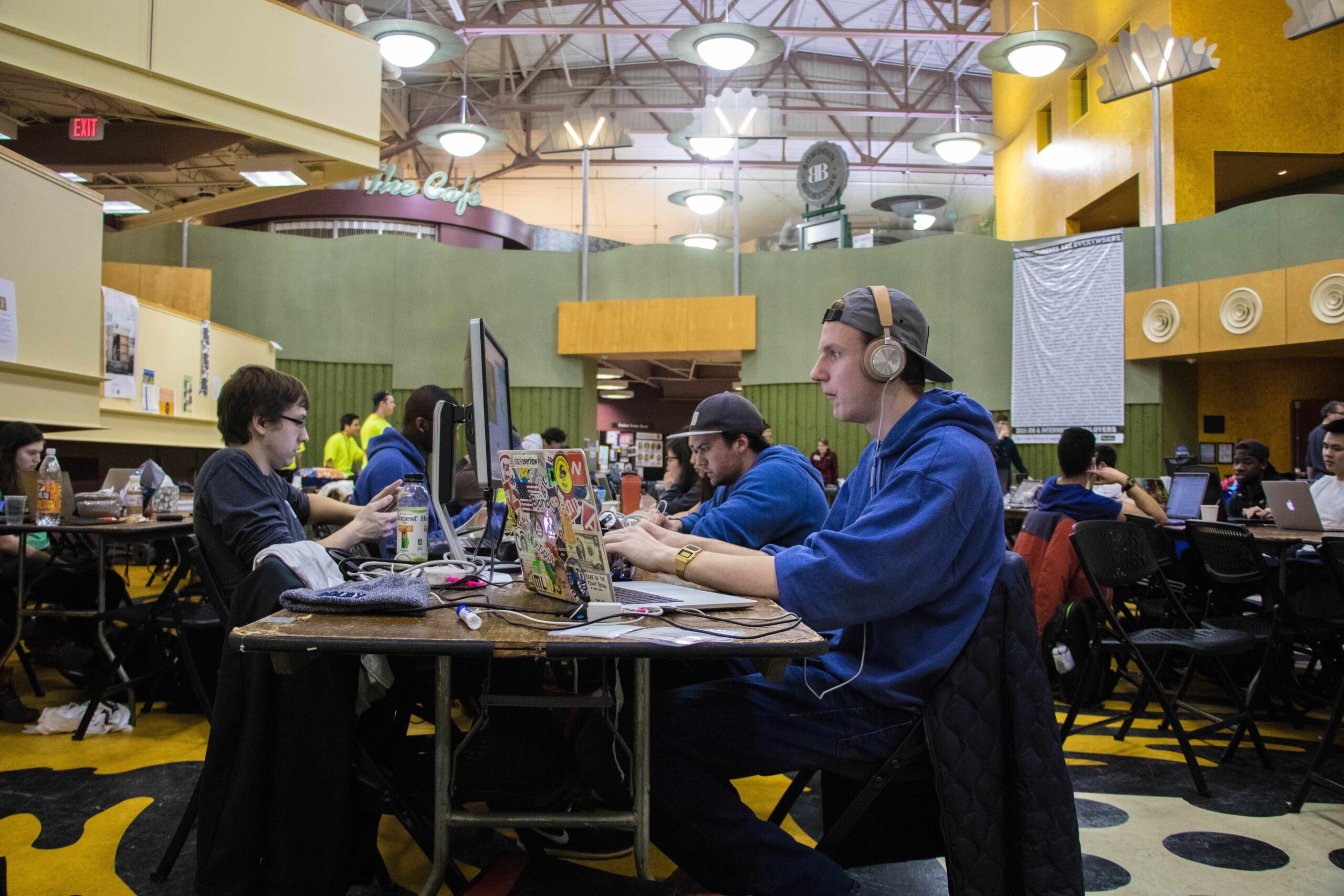Cox box, heart disease predictor win at hackathon
March 4, 2017
 Courtesy of Daniel Jiang
Courtesy of Daniel JiangStudents packed into David Saul Smith Union last weekend for the College’s third annual CBBHacks Hackathon. About 50 students from Bowdoin, Colby, Bates and Williams participated in the Hackathon in some capacity, and several Bowdoin students took home prizes for their creations.
“I think it was advertised better this year than last year,” said James Boyle ’17, leader of the Information Technology Advisory Council (ITAC) and one of the event’s principal organizers. “I think there was a lot more communication with other schools and we reached more schools this year than we did last year. We got through to more people.”
The Hackathon began Friday evening and lasted until Sunday morning, when students presented their projects.
Jessica Webber ’18 said she was impressed by the commitment that teams from other colleges showed. She noted that competing in the Hackathon was not an easy task—visiting students slept on the floor of Smith Union when they were not coding.
“It’s kind of self-selecting, the kids that are willing to make the six-hour drive and sleep in the Union,” Webber said.
Although most of the students who took part in the Hackathon were interested in computer science, Boyle emphasized that being a computer science major was not necessary in order to participate. He noted that several students from Bates competed, even though their school does not have a computer science program.
Although a team from Colby took home the top honor, several groups of Bowdoin students won awards. According to Boyle, the Hackathon awarded more prizes this year compared to previous competitions.
Webber, Arjun Laud ’20, Philip Wang ’18 and Seth Chatterton ’19 are all members of the rowing team. They spent the weekend designing an alternative to the cox box, which coxswains use in rowing to measure strokes and time.
“Cox boxes cost about 600, 700 dollars, and [the] technology is very outdated,” Webber said. “We figured we could use the GPS that is already in smartphones, the accelerometer, which is already in smartphones, and implementing a stop watch and we figured we could replace all the functionality of a cox box plus add some additional features.”
The group was awarded Best Hardware Hack.
Jimmy Lemkemeier ’19 and Ezra Sunshine ’19 attempted a different kind of project.
“We used machine learning to try to more accurately predict when people have heart disease,” Lemkemeier said. “We used online databases of cases of people with heart disease and tried to draw connections between their symptoms that would lead to heart disease.”
The program Lemkemeier and Sunshine created was 84 percent accurate in predicting heart disease.
“We were proud of that given that 30 percent of initial heart disease diagnoses are incorrect,” Lemkemeier said.
The pair won $400 in Amazon gift cards for their project.
The hackathon also featured virtual reality technology, brought by one of the sponsors. A group of Williams students organized their project around the technology, and passersby in the Union got the opportunity to interface with it.
“For a lot of other people [the virtual reality technology] served as kind of a demo, so people who were participating in the event, but also people who weren’t participating in the event but who were in the Union would walk by and say ‘hey, what’s that?’” Boyle said. “We got to show it to them. So I think that that was a very good outreach opportunity.”
Boyle hopes to encourage greater participation in future hackathons. Although 133 students signed up for the competition, only 50 students actually showed up at the door. He said that getting high-profile sponsors, such as Apple or Microsoft, might encourage greater turnout.
Still, Boyle was happy with how the event went.
“Everybody who showed up here seemed to have a good time and learn something, and I think that that’s the most important part,” he said.

Comments
Before submitting a comment, please review our comment policy. Some key points from the policy: